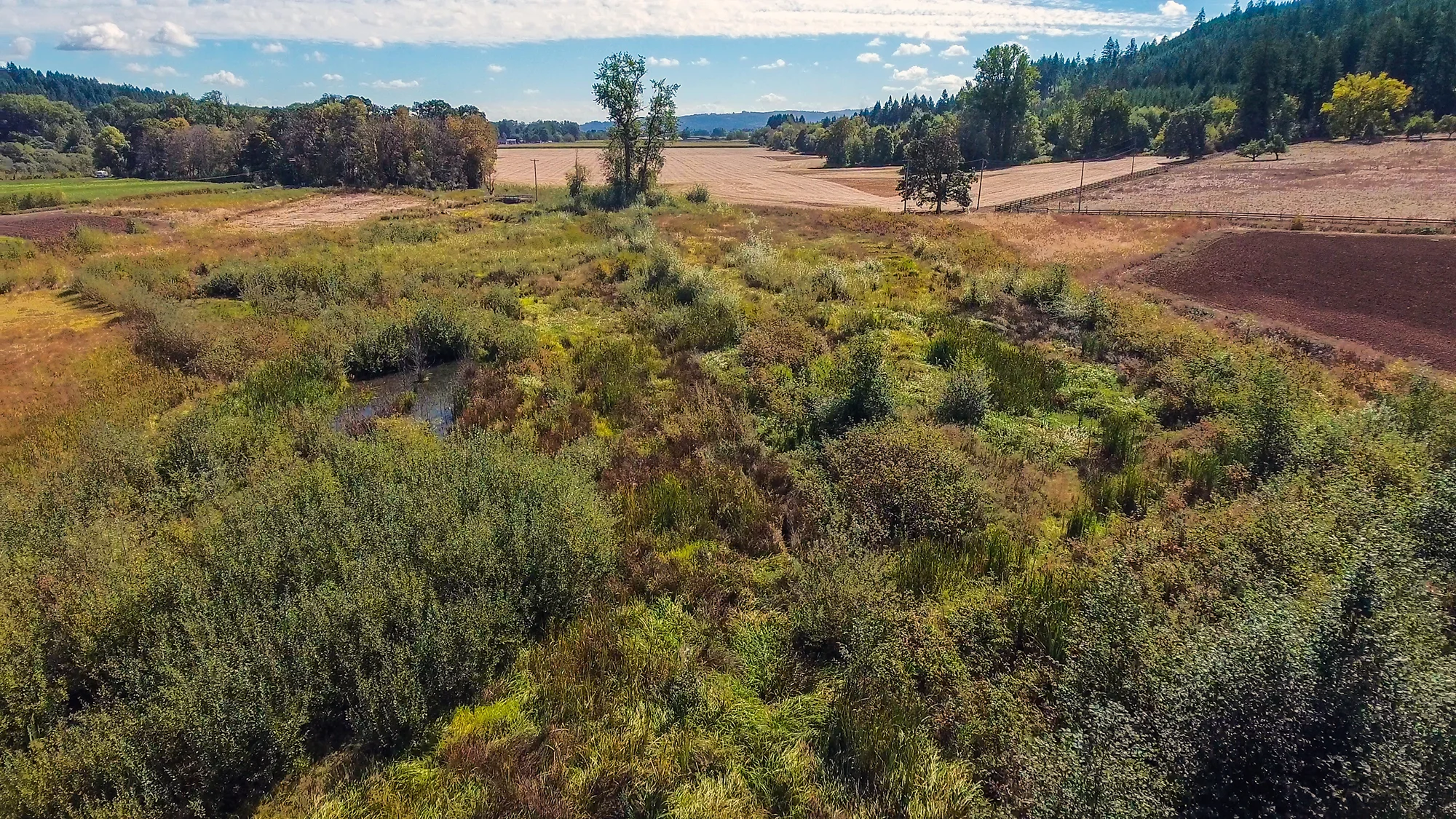Transforming a Landscape for All
The farm is thriving, a nursery is growing, and adjacent streams are healthy as can be at Half Mile Lane, located between Forest Grove and the mountains of Oregon’s Coast Range. This project on Roderick Creek demonstrates how a public-private partnership can transform a landscape for watershed health and economic prosperity.
The Site
First planting: 2011
Size: 19 acres
Stream length: 1,481 feet
Total to date: 91,385 plants
Plant communities: Riparian Forest, Wet Prairie, Scrub Shrub, Upland Buffer, Emergent Marsh
The Challenge
For decades, Roderick Creek had been reduced to a straightened, channelized drainage ditch. Without a riparian buffer or sufficient biodiversity, water quality suffered and wildlife habitat was compromised.
And yet Half Mile Lane, a privately owned 60 acre farm, once supported many important habitat features for native fish and wildlife. The site’s waterways flow into Gales Creek, a vital tributary of the Tualatin River with important spawning habitat. Recognizing the property’s potential, the Willamette Partnership, Clean Water Services, Oregon Department of State Lands, and Scholls Valley Native Nursery began to work on transforming it to again serve the needs of Mother Nature
The Transformation
Half Mile Lane became a pilot project to test innovative systems for land managers to measure ecosystem outcomes: Healthy streamside vegetation, improved water quality, and habitat for fish and wildlife. Oregon Department of State Lands oversaw the process and provided critical funding. Clean Water Services assisted with land access, managed the restoration work, and pledged long-term stewardship. The Natural Resources Conservation Service and Tualatin Soil and Water Conservation District worked with the landowners to create a farm plan for long term economic viability.
As a result of this collaborative effort, Roderick Creek now flows in a natural pattern with channel and floodplain wood, connecting new and enhanced wetland habitat and a mosaic of diverse ecosystems composed of native vegetation. Public-private partnerships have converted a ditched creek into a dynamic natural system that delivers a broad range of community benefits. What’s more, by investing in conservation; increasing habitat for pollinators; promoting seed collection opportunities; and reducing noxious weeds, the project has supported the growth of Scholls Valley Native Nursery, the land owner and an important partner in the project.
96 native plant species
Plant cover change*
Native shrub/tree: +35%
Native herbaceous: +16%
Invasive: +1%
* Figures measure increase/decrease since monitoring began in 2012. Shrub/tree and herbaceous cover are measured only in plant communities appropriate to those species.





































